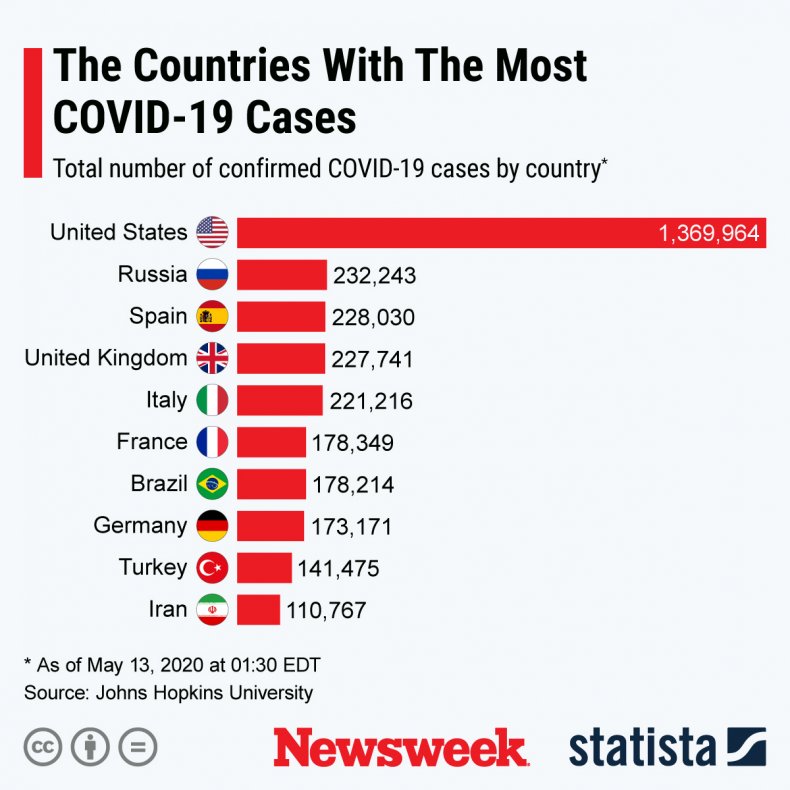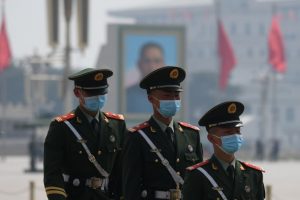Russia’s foreign ministry is demanding that the Financial Times and The New York Times retract reports stating that the real death rate in the country from the coronavirus is higher than officially recognized.
This week the FT reported that the COVID-19 death rate in Russia may be over 70 percent higher than official figures were stating. Meanwhile The Times cited figures from Moscow’s city government showing the mortality figures in the capital were much higher than average for the month of April.
But spokeswoman for Russia’s foreign ministry, Maria Zakharova, said that letters have been prepared disputing the publications’ claims.
Zakharova told reporters on Wednesday, according to state-run news agency Interfax, that the letters will “tomorrow be handed to the chief editors through our embassies in the U.S.A. and Britain.”
“They also address a relevant appeal to the OSCE Representative on freedom of the media…and the UNESCO Secretary General.”
“We will send similar materials to the UN secretariat, as an example of the same ‘infodemic’ that the UN Secretary General said we should fight,” Zakharova added, using the term that refers to false coronavirus news in the media that the World Health Organization (WHO) warned against earlier this year.
The previous day, Russia’s health minister, Tatyana Golikova, also refuted the figures cited by the FT.
“I am very pleased that the Financial Times is watching our meetings with the president of the country and listening to what we are discussing,” she said at a media briefing, Interfax reported.
“But I want to emphasize again that the data that I cited yesterday at the meeting with the president of Russia regarding the level of mortality in Russia, is 7.6 times lower than in the world as a whole, it is like that. And we have never manipulated official statistics,” Golikova said.
Newsweek has contacted the Financial Times and The New York Times for comment.
Russia has over 252,000 coronavirus cases as of Thursday, with the death toll over 2,300, according to government figures. The discrepancy between the high number of cases and low number of deaths has prompted questions over the official figures, although Russia partially attributes it to a massive testing campaign.
On Wednesday, Moscow officials said the cause of death for more than 60 percent of coronavirus patients in April were listed as being from other causes, Reuters reported.
Golikova denies statistics have been falsified, saying that unlike other countries, autopsies were carried out after all suspected coronavirus deaths.
“It’s impossible in other COVID-19 cases to name the cause of death. So, for example in over 60 percent of deaths the cause was clearly for different reasons,” she said.
Publishing “fake news” about COVID-19 has been criminalized, although some say the legislation is aimed at stopping independent reports contradicting official government statistics.
Senior fellow at the Carnegie Institute in Moscow, Andrei Kolesnikov, said that the Russian government is concerned about how the media is reporting the crisis.
“The problem of death rates is extremely sensitive,” he told Newsweek.
“There are objective difficulties in taking mortality statistics into account. In Moscow, for example, about 2,000 more deaths were found in April than a year ago in the same month.
“But it is impossible to establish how many died from coronavirus and how many due to other reasons. I cannot claim that the authorities are deliberately hiding the real scale of the problem,” he added.
President Vladimir Putin has faced record low polling in the last couple of weeks, believed to be in part due to his handling of the coronavirus, and his self-isolation.
“The government has no means of boosting its ratings, at least until the peak of the pandemic has passed and lockdown measures have been lifted,” Kolesnikov said.
The infographic below, provided by Statista, shows the countries with the most confirmed COVID-19 cases, as of May 13.
 Number of cases of COVID-19 reported worldwide as of May 13. Statista
Number of cases of COVID-19 reported worldwide as of May 13. Statista


















